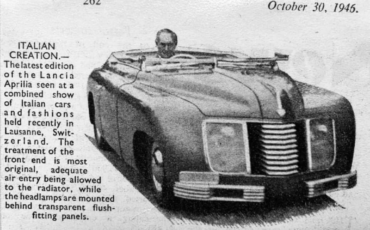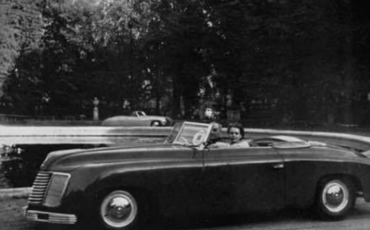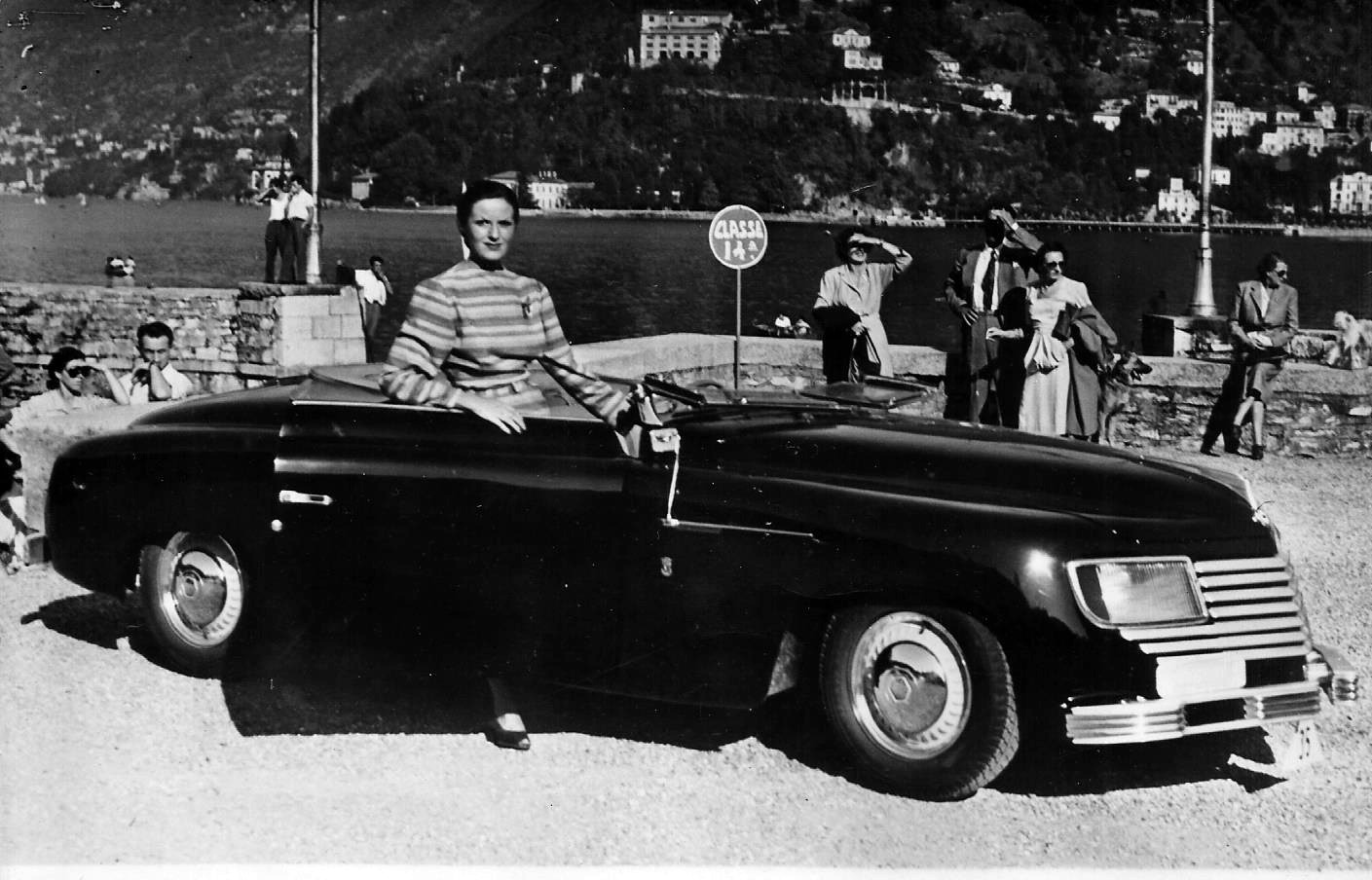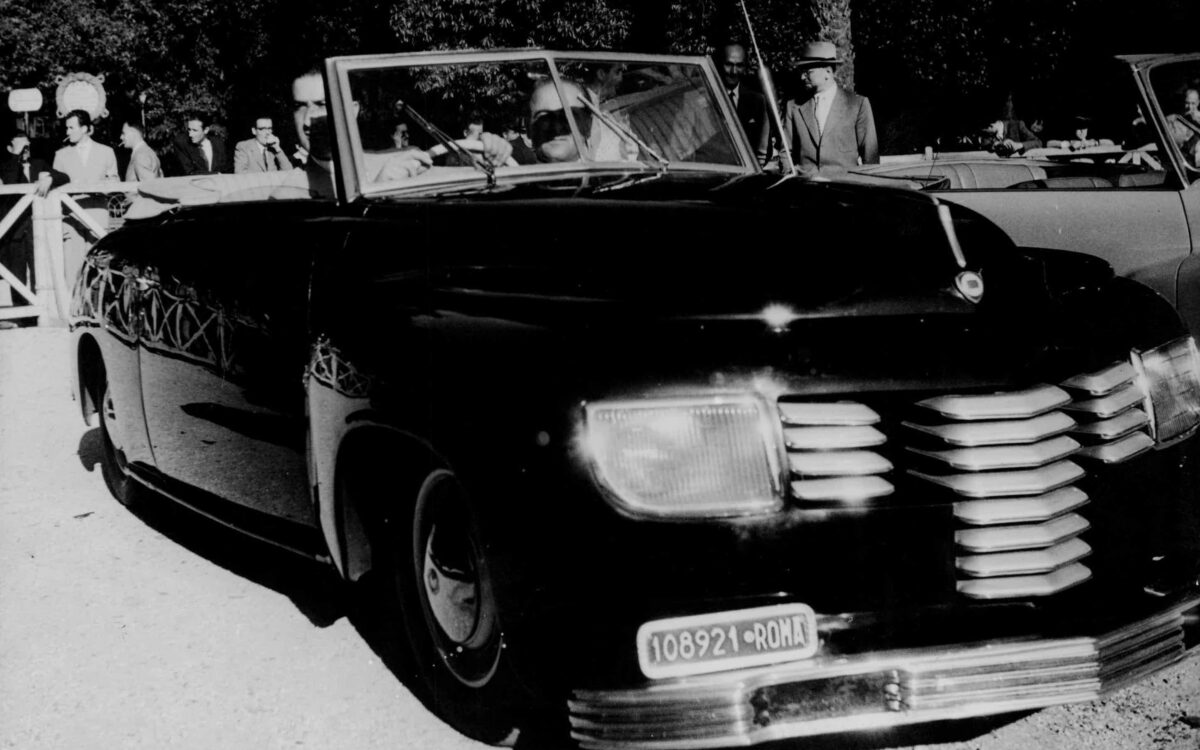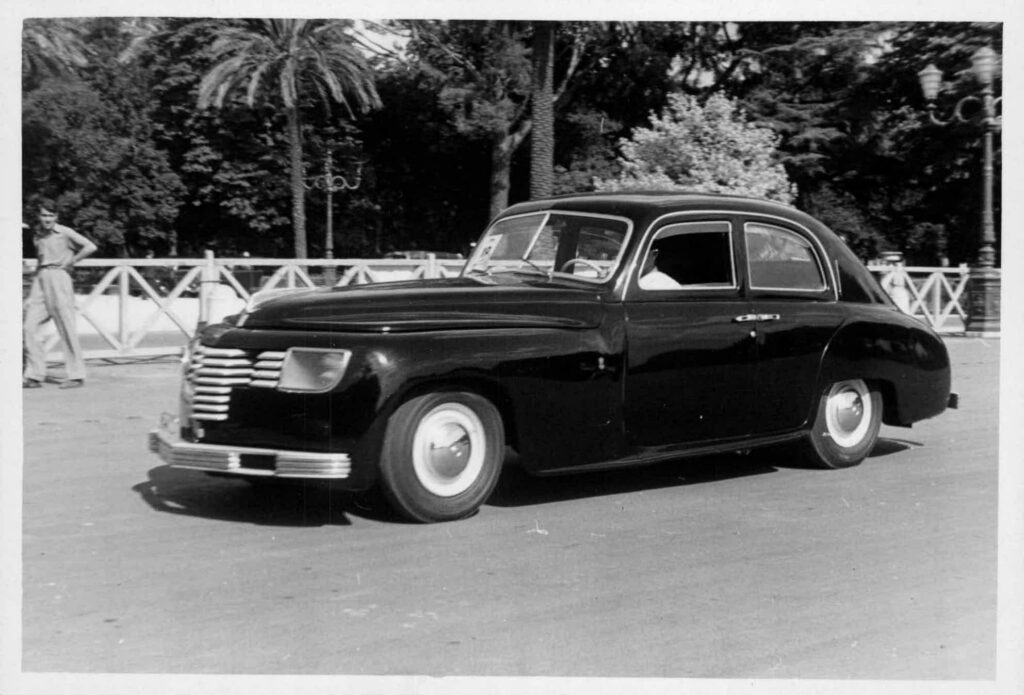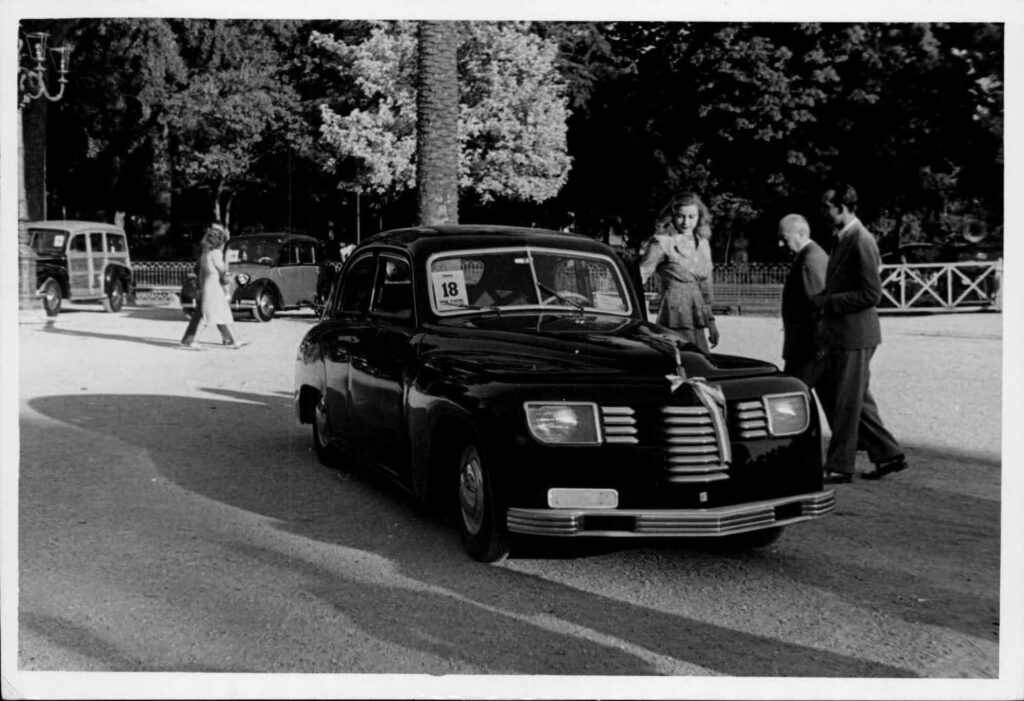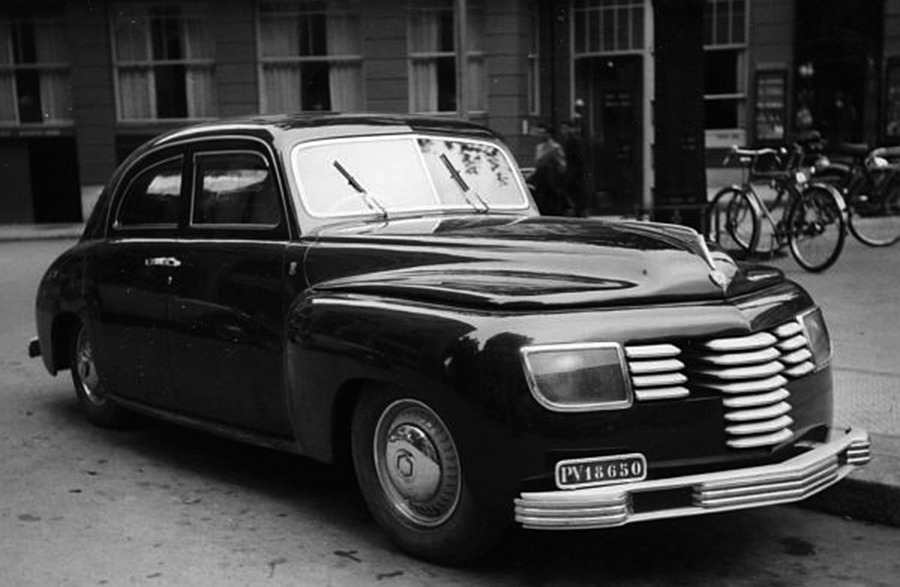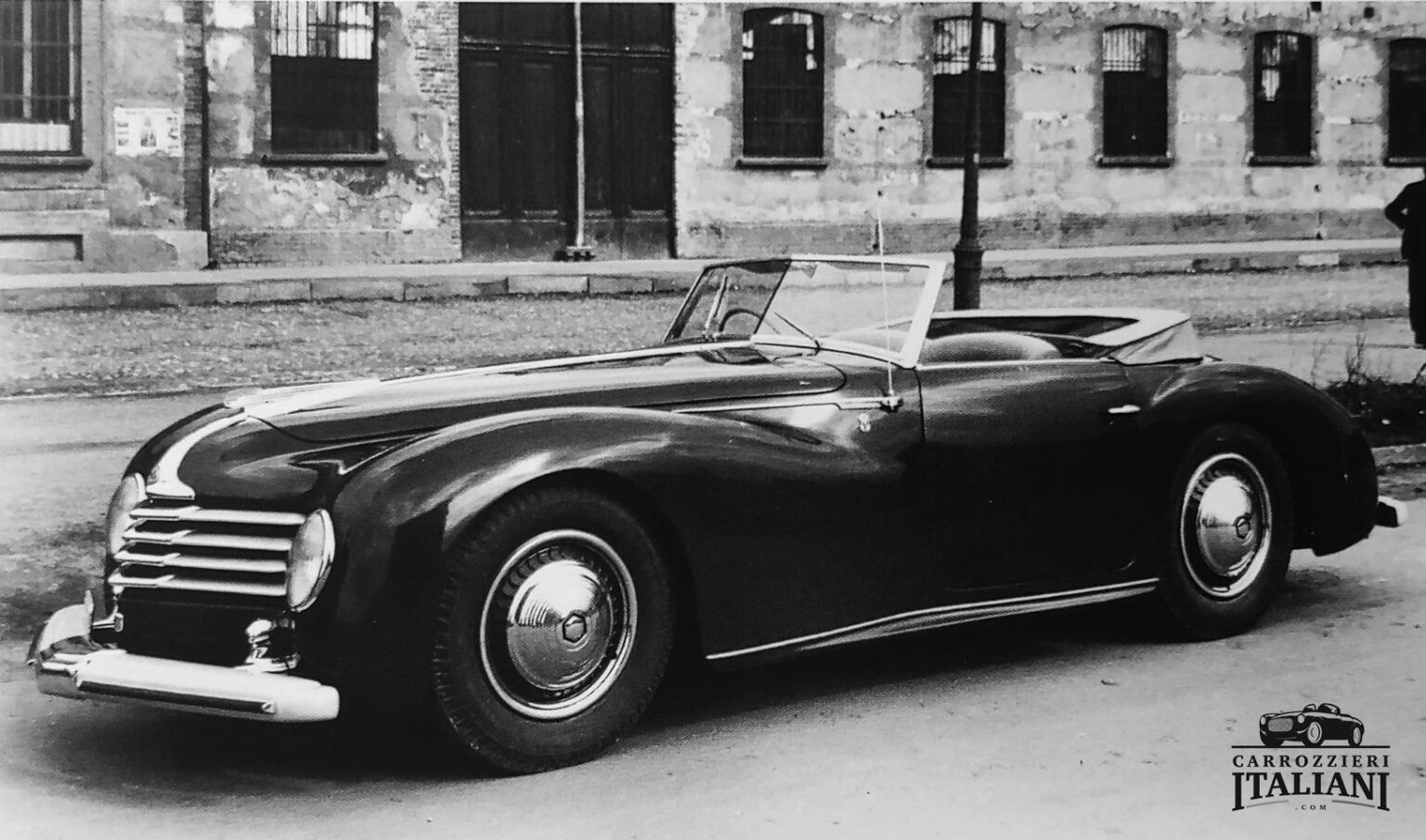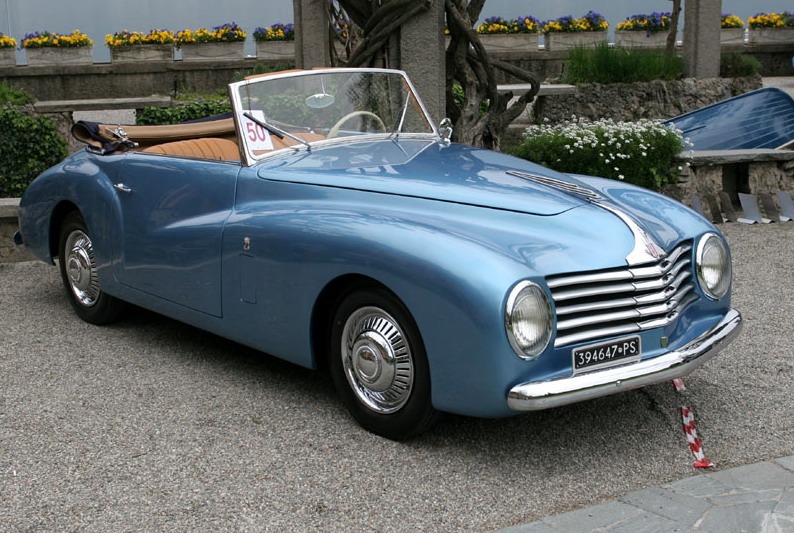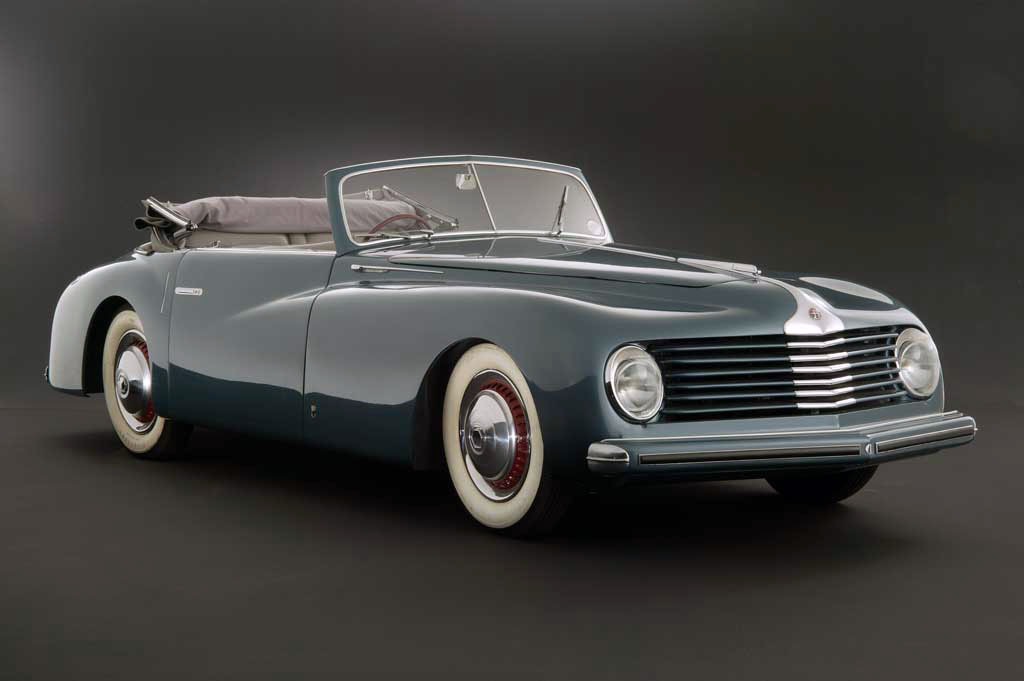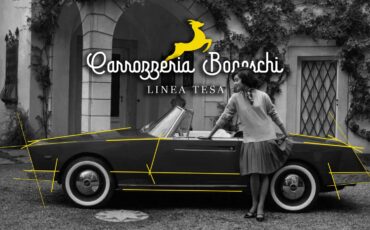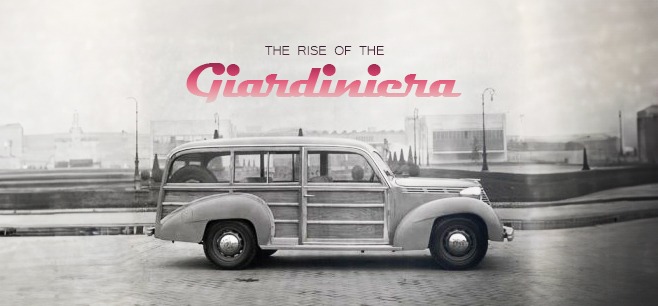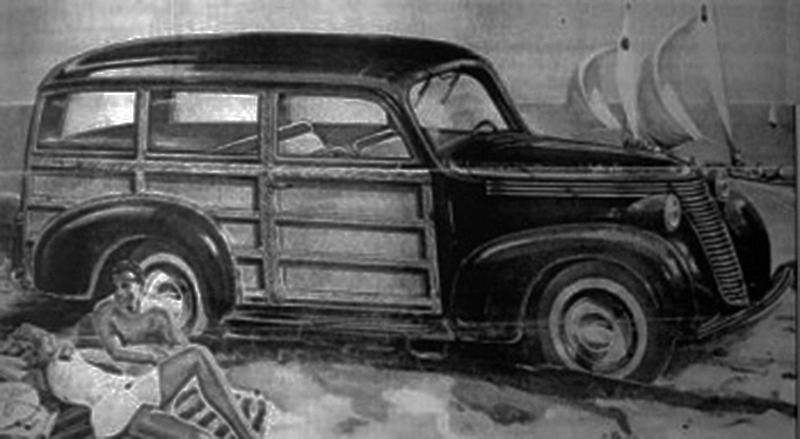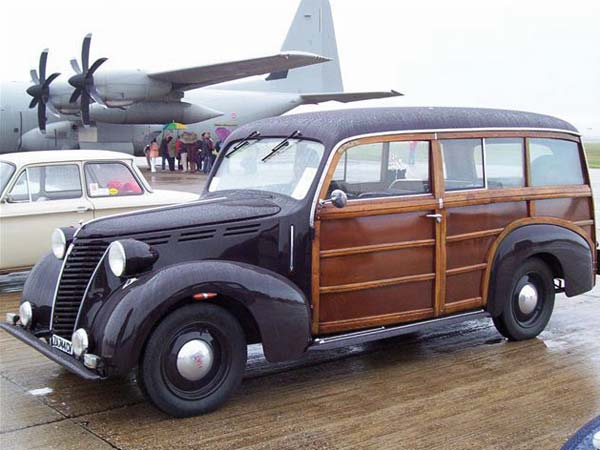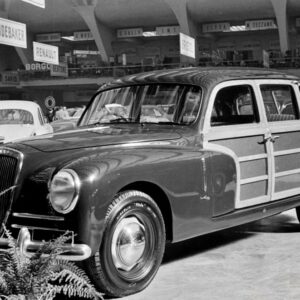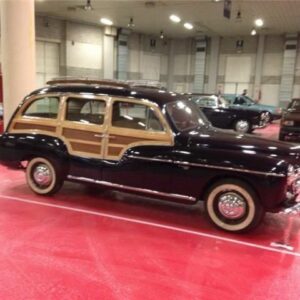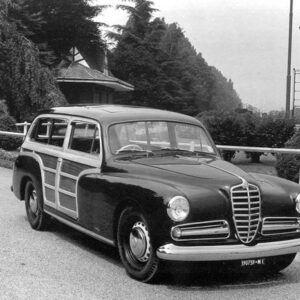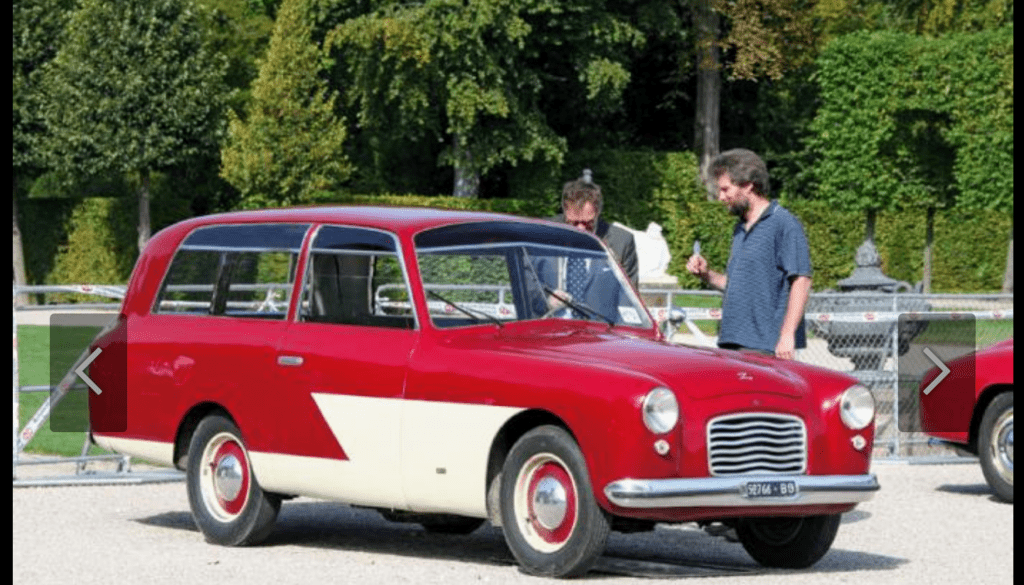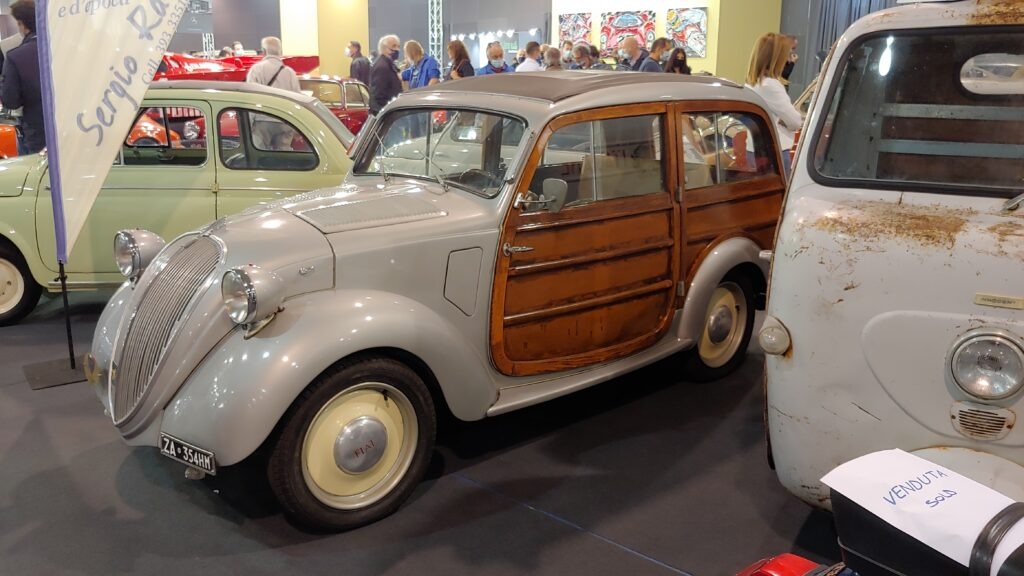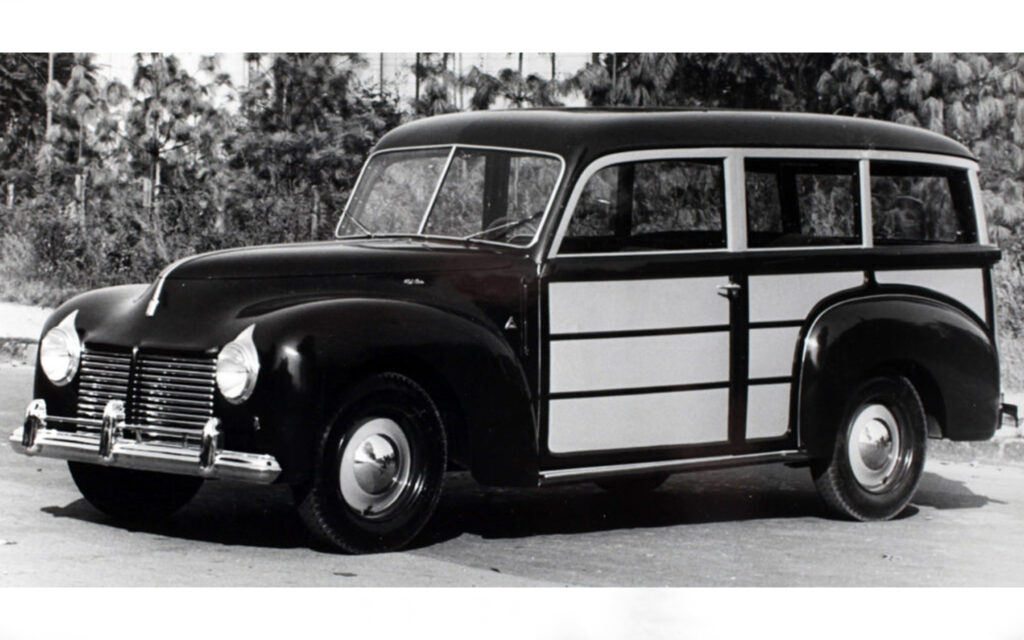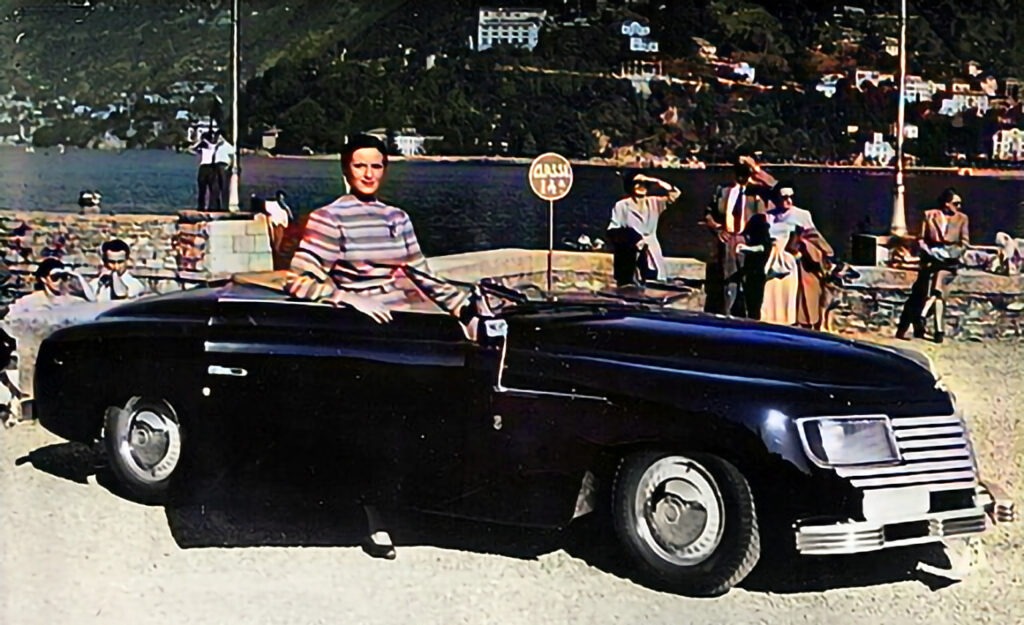
The aftermath of World War II ushered in a period of rebirth and reconstruction, not only for nations but also for the automotive industry. In the heart of this post-war era, the 1946 Lausanne Fashion Show in Switzerland emerged as a unique convergence of Italian cars and fashion, offering a glimpse into the evolving landscape of design and innovation. This event, held from 5th to 6th October, marked a pivotal moment for Italian coachbuilders which, eager to break free from the shackles of wartime constraints, showcased their creations.
The 1946 Lausanne Fashion Show
In the wake of the war, the design evolution of automobiles had come to a standstill, prompting Italian coachbuilders to push the boundaries of creativity and craftsmanship. The shores of Lake Geneva witnessed a spectacle where the fusion of automotive ingenuity and high fashion unfolded. This gathering served as a prelude to the upcoming “Mostra delle Carrozzerie Italiane,” the first-ever post-war Italian auto show, laying the groundwork for the future of automotive design.
Italian coachbuilders, renowned for their artistry, presented a captivating array of automobiles at the Lausanne Fashion Show, each bearing the distinct mark of experimentation.
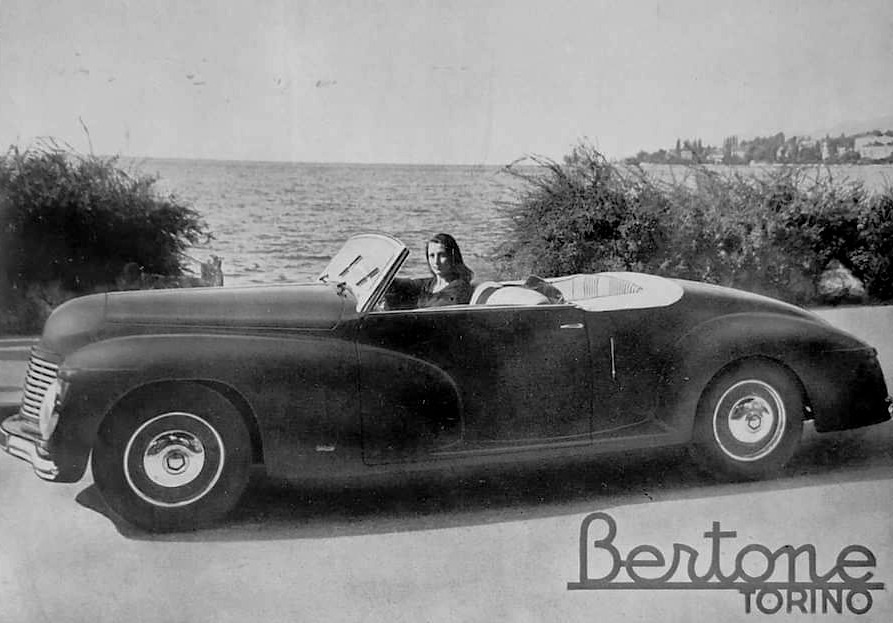
Among the illustrious names present at the event were Bertone, Pininfarina, Ghia, Touring, and Monviso, each showcasing their interpretations of automotive beauty and luxury. The exhibition hall by the shores of Lake Geneva bore witness to a dazzling array of automobiles, with special models meticulously crafted for the occasion.
Bertone, renowned for its avant-garde approach to design, captured the imagination of onlookers with a Spider based on the Fiat 1100 and a cabriolet derived from the elegant Lancia Aprilia. Meanwhile, Pininfarina, a stalwart of Italian automotive design, presented their own interpretation of the Lancia Aprilia, alongside an Alfa Romeo 6C 2500 cabriolet.
Ghia, known for its opulent creations, showcased an Alfa Romeo 6C sedan, while Touring wowed attendees with a sleek 6C 2500 coupé. Monviso, a name less familiar, unveiled a Fiat 1100 Stella Alpina, adding its own unique flair to the proceedings.
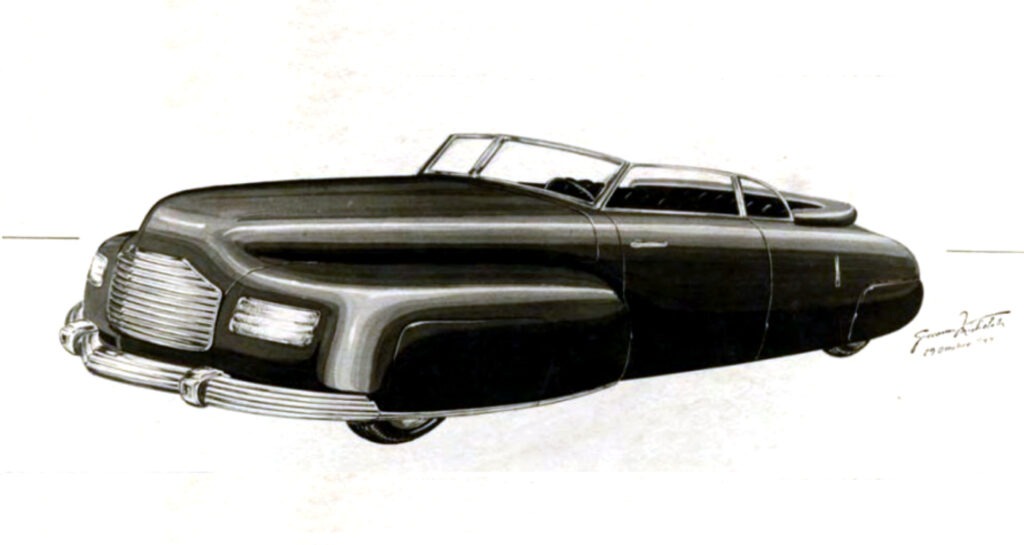
However, it was a particular design that stole the spotlight at the Lausanne Fashion Show: With Giovanni Michelotti at the helm, Stabilimenti Farina introduced the Lancia Aprilia Tank Style: a vehicle that would mesmerize audiences and shape automotive design for generations.
Tank Style Unveiled: Stabilimenti Farina's Avant-Garde Oddity
As the curtain rose on Stabilimenti Farina’s showcase at the 1946 Lausanne Fashion Show, attendees were met with a display that defied convention and challenged the boundaries of automotive aesthetics. Stabilimenti Farina, already celebrated for their bespoke creations, unveiled two groundbreaking models: the monolithic coupé and the avant-garde spider, both based on the Lancia Aprilia and collectively known as the Tank-Style cars.
These vehicles, characterized by their squat and low-slung profiles, represented a bold departure from the conventional norms of automotive design, challenging the boundaries of innovation in a post-war era ripe for change. The coupé, distinguished by its remarkably low roofline and covered wheel arches reminiscent of the Flamboyant models, created an illusion of a floating monolith, further cementing the Tank Style’s avant-garde allure.

The Tank-Style concept was replicated in subsequent cabriolets, as well as a saloon and a coupé, transforming what was initially perceived as a one-off creation into a series of remarkable automobiles. Stabilimenti Farina had inadvertently birthed an alternative to the flamboyant style championed by Ghia, but the differences were stark.
While the Flamboyant creations often exuded opulence and decorative extravagance, the Tank-Style cars took a more restrained yet captivating approach. The sides of these vehicles maintained a low, smooth profile, devoid of excessive ornamentation. However, the real spectacle lay at the front, where a large pointed grille and recessed headlights inside transparent panels commanded attention.
Concealed behind glass, the headlights departed from conventional norms, signaling a departure from tradition. Instead, the Tank-Style cars appeared to blend influences from European artistic movements such as Art Deco and Cubism. The outcome was a surprising amalgamation of daring shapes and angles, forging a visual language that surpassed conventional automotive design boundaries.
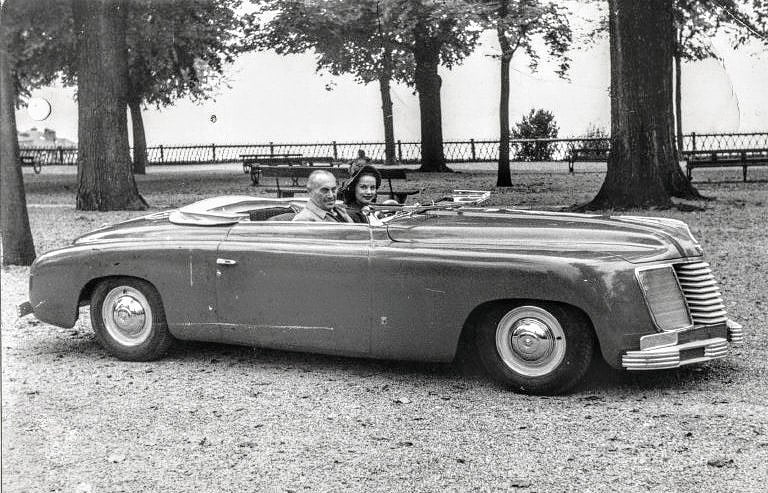
Yet, even with its departure from conventional beauty standards, the Tank-Style cars held their ground, challenging the notion that a car had to be traditionally beautiful to be marketable. The high build quality characteristic of Stabilimenti Farina’s bespoke creations served as a counterbalance, reassuring buyers of the craftsmanship behind the avant-garde design.
Introducing yet another dimension of fascination, the Tank-Style cars embraced a personal flair, evoking nods to Greek mythology and Apollonian minimalism. The stylized grille at the front hinted at an archaeo-futuristic portrayal of a Greek helmet. Additionally, the grille’s sculpted front bore a resemblance to the “Cowcatcher” found on steam locomotives: a protective shield designed to prevent objects on the tracks from causing derailment.
Fading Echoes: The Decline and Evolution of the Tank Style
The Lancia Aprilia Tank Style by Stabilimenti Farina, designed by Giovanni Michelotti, emerged as more than just an automotive creation; it was a testament to the boundless creativity of the post-war era, where experimentation and visionary design flourished against the backdrop of recovery and renewal.
The Tank-Style cars, born out of the fertile ground of post-war experimentation, saw their last manifestation in 1947 when a sedan version was put into production in limited series. This marked the culmination of Stabilimenti Farina’s venture into the avant-garde, encapsulating the essence of a design era that embraced innovation and unbridled creativity. Yet, the Tank Style’s influence persisted, subtly woven into the fabric of future projects by the Italian coachbuilder.
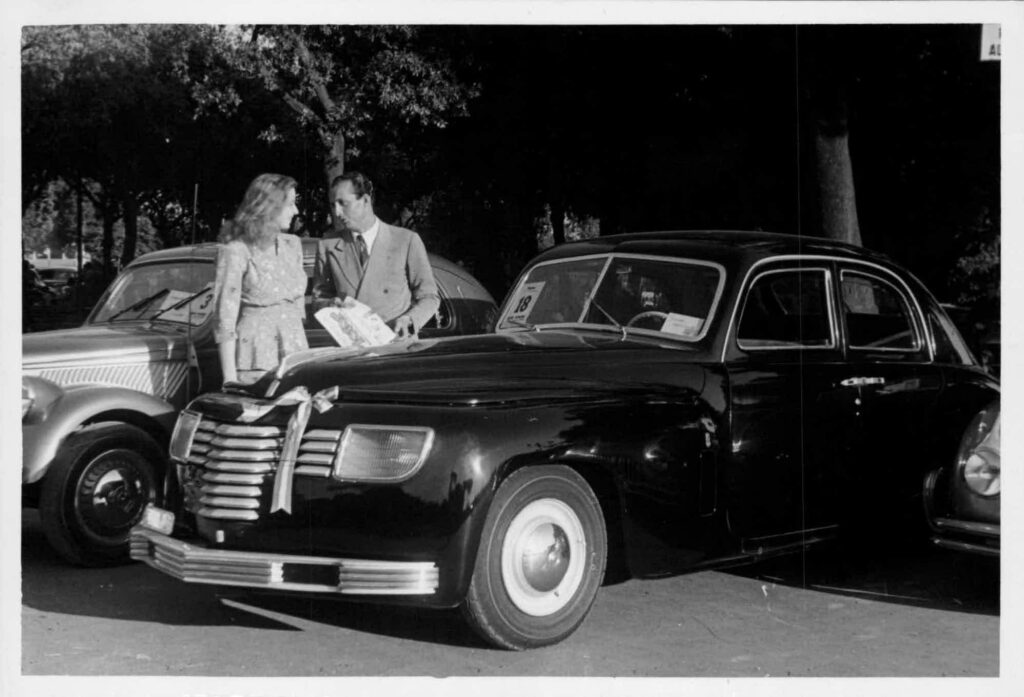
The Lancia Aprilia Berlina Gran Lusso, a final ode to the Tank Style, echoed the unique aesthetic of its predecessors. However, it also signaled the end of an era, as Stabilimenti Farina gradually shifted its design philosophy. The Tank Style had left an indelible mark, its influence subtly weaving its way into subsequent creations by the Italian coachbuilder.
In the years following, the distinctive front-end design of the Tank Style found its way into other Stabilimenti Farina projects. Notably, the grill of the Fiat 1100 Cabriolet and the Alfa Romeo 6C Coupé and Cabriolet Victoria and Cabriolet Extralusso carried the remnants of the Tank Style’s impact. Though slightly less pronounced, the echoes of the avant-garde aesthetic persisted, serving as a testament to the enduring legacy of a design that dared to defy convention.
However, as time progressed, the Tank Style gradually faded into the background. Stabilimenti Farina, perhaps recognizing the need for a more conventional approach in the ever-evolving automotive landscape, dismissed the avant-garde style that had once captivated audiences.
Conclusions
The Lancia Aprilia Tank Style by Stabilimenti Farina, designed by Michelotti, stands as a testament to a unique moment in automotive history. The Tank-Style cars, with their unconventional and audacious design, not only challenged the norms of their time but also left an indelible mark on subsequent creations. While the Tank Style itself was eventually retired, its influence lingered, serving as a reminder of a bygone era where post-war creativity and experimentation knew no bounds. The avant-garde spirit embodied by Stabilimenti Farina’s Tank Style remains etched in the annals of automotive design, a symbol of a time when the industry dared to dream beyond convention.

